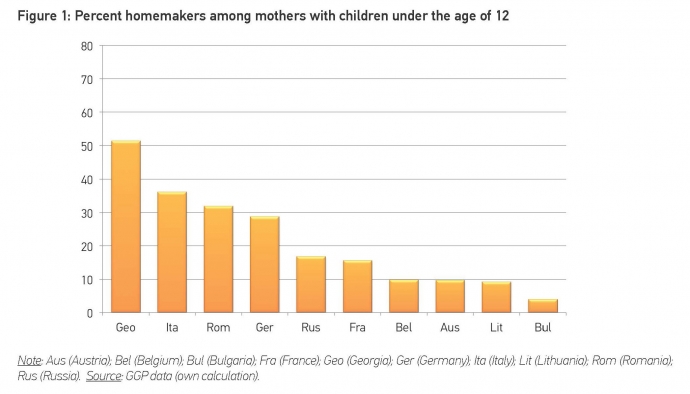To counteract population ageing and low fertility, the European Union has identified an increase in the labour force participation of women as one of its key objectives. This means encouraging women who are currently employed to stay in the labour market and encouraging women who are not currently employed to actually join the labour force. This GGP Research Note focuses on the work intention of stay-at-home mothers and of mothers who are currently on maternity or parental leave. Results suggest large within- and between-country differences in mothers’ labour market intention and highlight the determining influences of economic development, family-friendly policies and social norms regarding gender equality.

To counteract population ageing and low fertility, the European Union has identified an increase in the labour force participation of women as one of its key objectives. This means encouraging women who are currently employed to stay in the labour market and encouraging women who are not currently employed to actually join the labour force. This GGP Research Note focuses on the work intention of stay-at-home mothers and of mothers who are currently on maternity or parental leave. Results suggest large within- and between-country differences in mothers’ labour market intention and highlight the determining influences of economic development, family-friendly policies and social norms regarding gender equality.

Fill the form below with your contact information to receive our monthly GGP at a glance newsletter.
